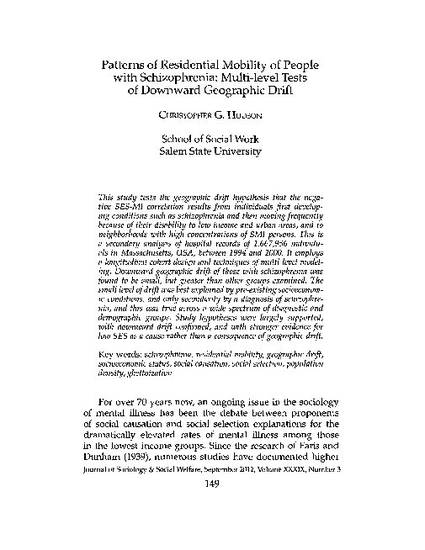
- Schizophrenia,
- residential mobility,
- geographic drift,
- socioeconomic status,
- social causation,
- social selection,
- population density,
- ghettoization
This study tests the geographic drift hypothesis that the negative SES-MI correlation results from individuals first developing conditions such as schizophrenia and then moving frequently because of their disability to low income and urban areas, and to neighborhoods with high concentrations of SMI persons. This is a secondary analysis of hospital records of 1,667,956 individuals in Massachusetts, USA, between 1994 and 2000. It employs a longitudinal cohort design and techniques of multi-level modeling. Downward geographic drift of those with schizophrenia was found to be small, but greater than other groups examined. The small level of drift was best explained by pre-existing socioeconomic conditions, and only secondarily by a diagnosis of schizophrenia, and this was true across a wide spectrum of diagnostic and demographic groups. Study hypotheses were largely supported, with downward drift confirmed, and with stronger evidence for low SES as a cause rather than a consequence of geographic drift.
Available at: http://works.bepress.com/christopher-hudson/23/
